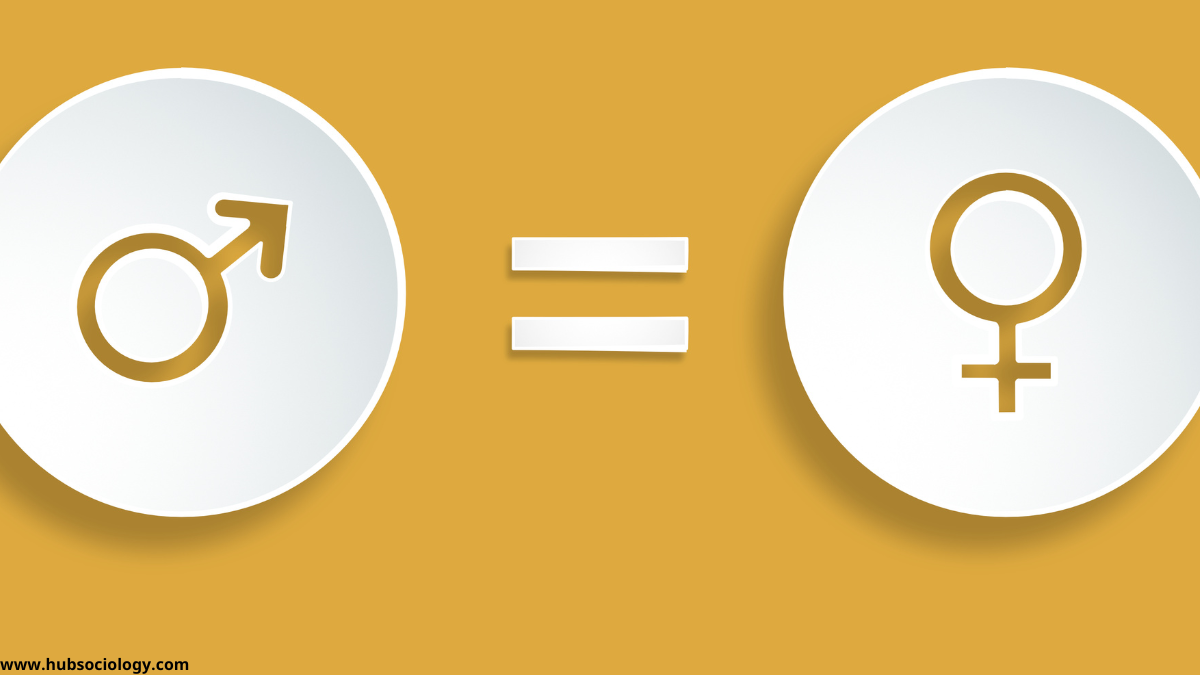Introduction
The age and sex composition of a population is one of the most fundamental aspects of demographic study. From a sociological viewpoint, it shapes the structure, functioning, and future direction of society. The way individuals are distributed by age and sex has direct implications on social institutions such as family, education, labor, politics, and healthcare. It determines not only the current social dynamics but also the capacity for future growth and stability. Understanding age and sex composition provides insight into the cultural values, gender norms, and generational balance that define a community or nation.
Concept of Age and Sex Composition
Age composition refers to the distribution of a population across different age groups — typically categorized as young (0–14 years), working-age (15–64 years), and elderly (65 years and above). This distribution affects economic productivity, dependency ratios, and social responsibility structures.

Sex composition, on the other hand, indicates the proportion of males and females in a population. It is often expressed as a sex ratio, which measures the number of males per 1,000 females (or vice versa). This ratio reflects biological, social, and cultural dynamics — from birth rates and mortality patterns to gender-based discrimination and migration trends.
From a sociological lens, both age and sex composition influence social behavior, intergenerational relationships, gender roles, and the distribution of power within society.
Determinants of Age and Sex Composition
The age and sex structure of a population is not random; it results from a combination of demographic and socio-cultural factors.
- Fertility Rates:
High fertility leads to a younger population, while declining fertility results in aging societies. In developing countries, high fertility often correlates with cultural norms that value large families and male offspring. - Mortality Rates:
Declining mortality rates, especially among children and the elderly, alter age distribution and extend life expectancy. Gender differences in mortality — often due to biological and social reasons — also influence sex composition. - Migration:
Migration can significantly distort sex and age structures. Male-dominated labor migration can result in gender imbalances in both the sending and receiving regions. Similarly, youth migration for education or employment affects the working-age composition. - Cultural and Social Practices:
Practices like female infanticide, sex-selective abortions, and gender-based neglect can skew sex ratios. Societies with strong patriarchal norms often exhibit a surplus of males. - Wars and Epidemics:
Historical events such as wars tend to reduce the male population, while pandemics (like COVID-19) disproportionately affect older populations, reshaping the age structure.
Sociological Significance of Age Composition
The sociological implications of age composition are far-reaching, influencing every aspect of collective life — from education and employment to intergenerational relationships and political power.
- Youth-Dominated Societies:
Societies with a large youth population (common in many developing countries) experience both opportunities and challenges. A youthful demographic can fuel innovation, energy, and economic growth — often termed the “demographic dividend.”
However, if employment opportunities are limited, it may lead to youth unemployment, political unrest, and social alienation. Youth bulges are frequently associated with revolutionary movements and demand for social reform. - Aging Populations:
Developed nations face the opposite challenge — an increasing proportion of elderly citizens. Aging societies strain pension systems, healthcare services, and the labor market. From a sociological perspective, aging also transforms family structures, caregiving roles, and generational hierarchies. The elderly may face social isolation and ageism, which alter their social identity and participation. - Intergenerational Relationships:
The balance between young and old affects intergenerational dependency. When older generations dominate numerically, cultural conservatism tends to increase, whereas a youthful majority often drives cultural change and modernization. Sociologists study these dynamics to understand social evolution. - Education and Labor:
Age composition determines societal priorities — a younger population demands investment in education and skill development, while an aging population requires medical care and social support systems. Sociologically, this reflects how societies distribute resources according to demographic needs.
Sociological Implications of Sex Composition
Sex composition affects gender relations, family patterns, and power distribution across societies. A balanced sex ratio supports stable social systems, whereas imbalances create various social and cultural consequences.
- Gender Imbalance and Social Tension:
Skewed sex ratios — especially male-dominated ones — often result in social problems such as forced marriages, trafficking, and gender-based violence. In patriarchal societies like India and China, a preference for sons has historically created an excess of males, leading to “marriage squeeze” situations where many men cannot find partners. - Changing Gender Roles:
In societies where women outnumber men, sociologists note shifts in gender roles and family patterns. Women’s participation in the workforce and leadership positions tends to increase, challenging traditional gender norms. - Family and Reproductive Patterns:
Sex composition affects household structures and fertility patterns. A male-dominated population might encourage polygamy or delayed marriages, while a female-dominated one may lead to single-parent families or increased women’s autonomy. - Political and Economic Representation:
Unequal sex ratios influence political representation and labor participation. In male-dominated societies, women often face exclusion from decision-making bodies. Conversely, gender-balanced or female-majority populations show higher inclusivity in governance and education. - Cultural and Social Identity:
Sex ratios reflect broader cultural ideologies. For instance, societies that value gender equality tend to exhibit balanced sex ratios, while patriarchal societies reveal deep-rooted gender bias through demographic data.
Consequences of Age and Sex Composition on Society
From a sociological viewpoint, the consequences of age and sex composition extend to all domains of collective life.

- Economic Consequences:
- A younger population implies a growing labor force but also requires heavy investment in education and employment generation.
- An aging population reduces labor availability and increases dependency ratios, shifting economic focus toward healthcare and social welfare.
- Gender imbalance can distort labor markets and economic participation, limiting social progress.
- Social Consequences:
- Marriage patterns change with sex ratio imbalances, leading to delayed marriages or increased social pressure on women.
- Family structures evolve — from joint families to nuclear or single-parent households — depending on demographic pressures.
- Social conflicts may arise when younger, unemployed populations feel excluded from economic or political opportunities.
- Political Consequences:
- Youth-dominated societies often experience demands for democratic participation and reform, as seen in various global youth movements.
- Aging societies prioritize welfare and healthcare policies, influencing political platforms and voting patterns.
- Gender composition affects women’s representation in politics and policy-making.
- Cultural Consequences:
- Changing demographics reshape cultural norms, gender expectations, and family traditions.
- Intergenerational gaps in values and technology use create cultural tension between older and younger groups.
- Health and Welfare Consequences:
- A higher elderly population increases demand for medical services, old-age homes, and mental health support.
- A youthful population needs reproductive health education and preventive healthcare.
- Gender-based demographic imbalances may result in health neglect of women and girls in patriarchal contexts.
Sociological Theories Related to Age and Sex Composition
- Structural Functionalism:
This theory views age and sex composition as mechanisms that maintain social equilibrium. Each age and gender group performs specific social roles — for instance, adults as economic providers and the elderly as cultural custodians. Any imbalance can disrupt the functional order of society. - Conflict Theory:
From this lens, demographic imbalances reflect power inequalities. Gender discrimination, unequal access to healthcare, and resource allocation are manifestations of broader class and gender conflicts. - Feminist Sociology:
Feminist theorists emphasize how sex ratios mirror patriarchal control. Gender disparities in population structure reveal systemic inequalities, cultural biases, and exclusion of women from public life. - Symbolic Interactionism:
This perspective explores how societies attach meanings to age and gender. Ageism and sexism stem from symbolic associations — for instance, associating youth with productivity or masculinity with strength — which shape everyday interactions.
Conclusion
The study of age and sex composition is far more than a demographic exercise; it is a window into the social fabric of human life. From shaping family patterns to defining gender roles, and from determining social policies to influencing economic trends, demographic structures carry profound sociological meaning. A balanced age and sex composition promotes harmony, equality, and progress, while imbalances can lead to social tension, inequality, and cultural transformation.

Therefore, sociologists and policymakers alike must analyze these patterns not merely as numbers but as reflections of human values, social systems, and the evolving story of civilization.
Do you like this Article ? You Can follow as on :-
Facebook – https://www.facebook.com/hubsociology
WhatsApp Channel – https://whatsapp.com/channel/0029Vb6D8vGKWEKpJpu5QP0O
Gmail – hubsociology@gmail.com
Topic Related Questions
5 Marks Questions (Short Answer Type)
- Define age composition and explain its sociological importance.
- What is meant by sex ratio? How is it calculated?
- Mention any two factors that influence the age composition of a population.
- What are the major determinants of sex composition?
- Write briefly on the consequences of an aging population.
- Explain the meaning of “demographic dividend.”
- How does migration affect sex composition?
- What is the sociological significance of a youth-dominated population?
- Mention two social problems arising from gender imbalance.
- Define ageism and give an example.
10 Marks Questions (Short Essay Type)
- Discuss the sociological implications of age composition in modern societies.
- Examine the effects of skewed sex ratios on social structure and gender relations.
- Explain the factors responsible for variations in age and sex composition.
- Discuss the impact of demographic transition on age structure.
- How does age composition influence family and intergenerational relationships?
- Analyze the economic and social consequences of an aging population.
- Discuss the sociological theories that explain the importance of age and sex composition.
- Evaluate the impact of gender imbalance on marriage and family systems.
- Examine the relationship between fertility rate and age composition.
- How does modernization influence sex composition and gender roles?
15 Marks Questions (Long Answer / Essay Type)
- Discuss the sociological consequences of age and sex composition in developing and developed societies.
- Analyze how age and sex structure affects economic development, social stability, and political participation.
- Examine the interrelationship between demographic factors (fertility, mortality, migration) and age-sex composition.
- Critically evaluate the social problems associated with unbalanced sex ratios in patriarchal societies.
- Explain the role of age and sex composition in shaping social institutions such as family, education, and labor market.
- Discuss with examples how population aging and youth bulges create different sociological challenges.
- Analyze the issue of gender inequality through the lens of sex composition and sociological theory.
- “The age and sex composition of a population reflects its social structure.” — Discuss this statement with sociological examples.
- Evaluate the sociological impact of demographic transition on the age and sex structure of populations.
- Discuss policy implications of age and sex composition for sustainable social development.
